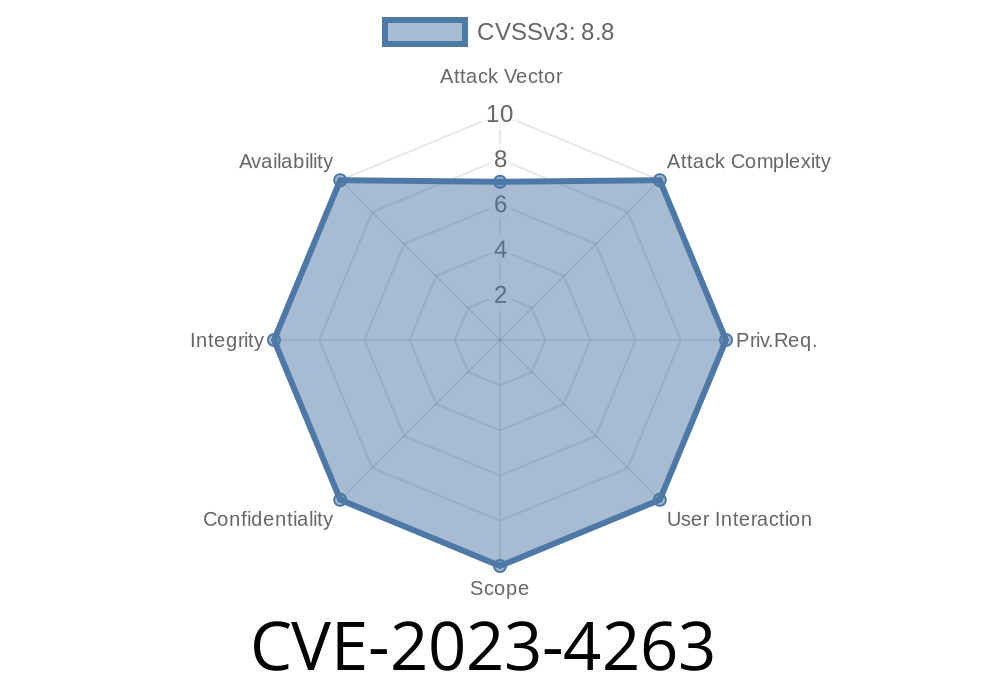A recent security vulnerability has been discovered within the Zephyr IEEE 802.15.4 nRF driver, with the identifier CVE-2023-4263. This article aims to explain the potential buffer overflow vulnerability in simple terms, explore the risks involved for developers and end-users of the driver, and provide example code snippets along with links to original sources for those looking to mitigate this vulnerability. Lastly, we will discuss the manner in which this vulnerability can be exploited, offering advice on how to best protect your systems against such risks.
CVE-2023-4263: The Vulnerability Explained
A buffer overflow is a software vulnerability that occurs when more data is written to a buffer than it can accommodate, causing the excess data to spill over into adjacent memory. This can lead to unpredictable behavior, application crashes, or potentially exploitable conditions if an attacker is able to overwrite pointers or control data within the memory space.
In the case of CVE-2023-4263, this buffer overflow vulnerability is found within the Zephyr IEEE 802.15.4 nRF 15.4 driver, used for low-power wireless communications. Specifically, the issue exists in how the driver handles buffer allocations for received packets, making it possible for an attacker to trigger a buffer overflow if they send crafted packets to the device running the vulnerable driver.
Code Snippet Example
To illustrate the vulnerability, let's consider the following code snippet found in the nRF 15.4 driver, which processes incoming radio packets:
void nrf_802154_received_timestamp_raw(uint8_t *p_data, int8_t power, uint32_t timestamp)
{
uint8_t length = *p_data;
if (length > FRAME_MAX_LENGTH) {
// Drop the packet if it's too long
return;
}
nrf_802154_buffer_t *p_buffer =
(nrf_802154_buffer_t *)&buffer_rom[p_buffer_rom_index * sizeof(nrf_802154_buffer_t)];
// Copy the received packet data into the buffer
memcpy(p_buffer->data, p_data, length);
p_buffer->length = length;
// Other processing…
}
In this code snippet, the driver first checks the length of the received packet (stored in *p_data). If the length is greater than the FRAME_MAX_LENGTH (127 bytes), it drops the packet, as it is too long. However, there is an issue when allocating the buffer for the packet. The amount of memory available for the packet is not properly taken into account, leading to a potential buffer overflow.
Exploit Details
An attacker could exploit this vulnerability by sending a specially crafted packet with a length that would trigger the buffer overflow. In doing so, they might be able to overwrite important memory regions, potentially gaining control of the target system or causing a crash.
To mitigate this vulnerability, developers should ensure that the available buffer space for incoming packets is properly checked before copying data in memory.
The patch for this vulnerability can be found in the official Zephyr repository, as linked below
https://github.com/zephyrproject-rtos/zephyr/pull/42457.patch
This patch modifies the nrf_802154_received_timestamp_raw() function to correctly take into account the amount of memory available for the buffer, preventing the potential buffer overflow.
Conclusion
CVE-2023-4263 represents a potential buffer overflow vulnerability within the Zephyr IEEE 802.15.4 nRF 15.4 driver, putting systems and connected devices at risk from attackers. By understanding the underlying cause of the vulnerability and applying the appropriate patch or modifications to your code, you can help mitigate and protect against any potential exploits leveraging this vulnerability. As always, make sure to stay informed and up-to-date on security issues to minimize the risk to your projects and systems.
Timeline
Published on: 10/13/2023 21:15:51 UTC
Last modified on: 11/14/2023 03:15:10 UTC
